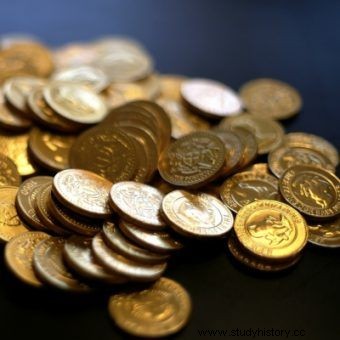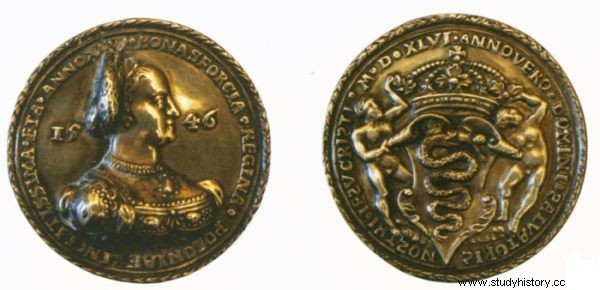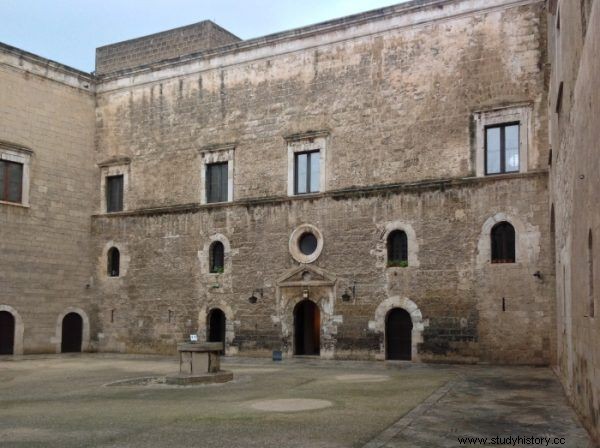When visiting European museums, it's hard not to feel jealous. The wonderful collections of the Habsburgs, Windsor and Bourbons delight millions of tourists. In Vienna, the extraordinary "Chamber of Art and Miracles" occupies almost forty exhibition halls. We only have a rebuilt castle and a couple of recovered tapestries. But once it was just the opposite!
In 1562, the papal legate Bernard Bongiovanni wrote down his impressions of his visit to Poland. He returned to Italy completely speechless by what the last Jagiellonian, Zygmunt August, had presented to him. He reported:
The king has beautiful equipment, including he has 180 large and countless small cannons in Vilnius , very beautifully made, in which he is particularly fond of.
For Himself, His Majesty has wonderful armor, four of which are simply wonderful, especially the one with delicately engraved silver depictions of all his ancestors' victories over Moscow . It cost 6,000 scudos. Other wins are shown on the rest of the armor.
The military collections were only a modest part of the royal collection. Most of the treasures were kept secret. Zygmunt August himself admitted to the legate that "he does not want Poles to know that he has so many" . 
Knowing the noble mentality, he sensed that the members of the Seyms would sooner force him to sell off the entire harvest than agree to any taxes. He preferred to play the role of bankrupt.
Sixteen caskets of greatness
“In one of the rooms there is a large table that takes up almost the entire room. There are sixteen boxes on it each two cubits long and one and a half wide, all filled with jewels "Bongiovanni continued. The papal envoy has described in detail a number of valuables.

Bona Sforza on a medal from 1546. Without it, there would be no great treasure of the Jagiellonians.
He mentioned "beautiful things that the king loves, like fountains, clocks with human-sized figures, organs and other instruments ". Zygmunt August even had "the globe with all blue marks, according to his measure", as well as a cap "full of emeralds, rubies and large diamonds" .
The value of only the latter was estimated by the legate at at least three hundred thousand scudos. Another half a million scudos were to cost four of the sixteen boxes filled with valuables. These amounts are hard to believe. They are stunningly large. The Skud was a high purity gold coin.
Skudy varied in value from mint to mint, but Bongiovanni probably meant papal money. According to historian Henryk Wojtyski, such a scud was worth "a little more than one Polish florin". For a royal hat one could buy some two or three hundred tenement houses in Kraków. In other words - the whole city and a few more nearby.
A fortune the world has never seen
The legate frankly stated:"Neither in Venice, nor in Rome, nor in any royal treasures, I did not see anything that could compare with the wealth of the Polish king ". Meanwhile, it was only a shadow of the former Jagiellonian property.
The richest member of the family was Zygmunt August's mother, Bona Sforza. Thanks to her own talents and determination, she had accumulated a fortune that was unmatched on the continent. After the death of her husband, Sigismund the Old, and after she got into a sharp dispute with her son, Bona decided to go to Italy and spend her last years in the Duchy of Bari that belonged to her. The Queen Mother took twenty-four wagons filled with valuables to Italy.

Bona Sforza's missing jewelery box.
These enormous treasures, as well as the queen's fabulous financial reserves, led to her death after several months. She was murdered by the Habsburgs by her closest henchman - Jan Lawrence Pappacoda, who had been working secretly for the German dynasty for years.
Twenty-four treasure carts
The vast majority of valuables were lost with her death and today it is impossible to say what exactly Polish culture lost.
Only twenty-one days after Pappacoda killed Sforzówna, the inventory of her property was started. At that time, there was hardly any cash left in the castle of Bari .
However, a lot of movables have survived, which are inevitably more difficult to remove and liquidate. The inventory, examined by Magdalena Piwocka, gives, among others: two hundred and seventy rings, thirty necklaces, eighty pendants, forty strings of pearls, one hundred and twenty-eight loose jewels for decorating clothes and thirteen bracelets.
The Queen even had fragments of a unicorn's horn in her collection (in fact it was probably a narwhal tusk).

The courtyard of the castle in Bari. It was in this gloomy mansion that Bona Sforza lost her life (photo:Kamil Janicki).
For many years, Zygmunt August fought with the stubbornness of a maniac to recover every remnant of his mother's fortune. A letter is known in which he even asked about a single “quilt” that covered Bona's coffin. Eventually, the Habsburgs, bored with the dispute, returned four treasures of valuables to the Polish king. The imperial family fell into a much larger part of the treasures, giving one of the impulses to create the "Chamber of Art and Miracles".
We may have had a miracle chamber as well
It was a family collection of valuables and curiosities, which the Habsburgs actually started to create in the second half of the 16th century. It has survived to this day under the name of Kunstkammer and is the backbone of the collection of the Viennese Museum of Fine Arts.
Various exhibits have been collected in several dozen rooms. From medieval griffin-shaped watering bottles through masterpieces of sculptures and casts made of live animals to bizarre constructions with an ostrich egg in the lead role and modern robots, such as a silver-plated bear with a rifle in hand .
Strolling through this amazing collection, it's hard to believe that in 1572 the Habsburg collections could not even match the variety and value of the enormous "miracle chamber" of Sigismund Augustus. The king spent all his life collecting treasures and recovering what his mother had accumulated before him.
He could not have known that all these efforts would be in vain and that the great treasure of the Jagiellonians would be lost without a trace. However, this is a topic for another article.
